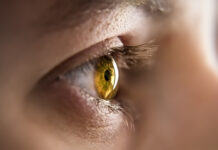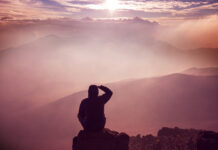Entrainment is a crucial word in the dictionary of chronobiology. It means a close alignment between the internal body clock(s) and the external world of day and night. In the bad old days before electric light, the human race was fairly well synchronised to the shifts in light and dark across the 24-hour day and across the seasons. A nighttime candle or gas lamp was insufficient to delay sleep onset very much. Times have changed, enormously. Our 24/7 society became a driving force to expand daytime hours, conquer the night, shorten sleep . . . and exacerbate stress. Now, the Corona shutdown has had a paradoxical effect of reminding people what rest-activity cycles could look like when slowed down. More comfortable. More productive. Emotionally less stressful. We need to learn from this, and re-evaluate the importance of good entrainment for good sleep and wakefulness.
Consider the concept of “chrono-ecology.” Chrono-ecology combines insights into mechanisms of the circadian clock and its importance for the organism’s biology, with an understanding of how adaptation to the time-space niche of the real world takes place. The properties of the circadian system have been analyzed in the laboratory and provide us with a cogent theoretical framework. However, the lab is not a naturalistic environment, where seasonal daylength, temperature cycles, food availability, interactions with our own and other species is continuously changing.
Chrono-ecology focuses on the behavior of biological clocks out there in daily life. Humans are the most individualistic of mammals, with extremely variable lifestyles and social mores . . . and these days, little regard for the demands of internal time. We work at night, or remain indoors and rarely see daylight, we cross time zones, we squeeze sleep into shorter and shorter time frames, and we demand high performance at all times of day. The consequences of this chronic sleep loss, and our vulnerability for mistakes at certain circadian phases, have emerged as clear social problems: reduced learning and memory capacity, reduced functioning, higher accident rate, not to mention adverse medical consequences and mood disorders.
The timing of self-selected sleep is multifactorial, including speed of the internal clock (producing “lark” and “owl” chronotypes), genetic disposition, accumulated sleep debt, culture, and school or work schedules. Most important for good synchronization is light exposure, the primary environmental factor for strengthening the entrainment signal. The more overall (outdoor) light subjects receive, the earlier they are ready for sleep. The more regular their daily light exposure, the more regular and refreshing their sleep. Adolescent sleep shows phase delays — and it’s not our kids’ fault! Some cultures augment the discrepancy between students’ late internal clocks and external alarm clocks by demanding very early school times. (Switzerland is a case in point., compared with Anglosaxon countries.) Till Roenneberg has beautifully christened this condition of desynchronization as “social jetlag.” Late chronotypes have difficulty with the morning shift, while morning chronotypes function better. (The opposite holds for morning and evening types on the evening shift.) With age, sleep advances in phase and causes a different kind of social jetlag, early morning awakening. Another biological relic is our capacity for seasonal responses. With artificial lighting and heating, we no longer experience the long winter nights of our forebears and fail to adapt physiologically to the seasons.
One of the basic tenets of chronobiology is that temporal order is essential for health. Entrainment occurs primarily with light as a synchronizing agent. Recognizing that our lifestyle modifies light-dark exposure, that culture determines our wake-up times, and that individuals have a wide range of sleep need, is a first step for identifying and applying straightforward remedies to reshape the Procrustian bed into which our sleep has been forced. We have learned that mood and wellbeing improve with light: light is the treatment of choice for winter and other depressions. Appropriately timed light (and enough darkness) stabilizes sleep. Simulated dawn and dusk can imitate and replace the lost natural signal. The potential clinical applications of prescribed light and darkness are vast, and still being explored. Let us return to chrono-ecology based behavior that protects our health!
Anna Wirz-Justice PhD, Professor emeritus, is a founding member of the Society for Light Treatment and Biological Rhythms and the Daylight Academy, and Board member of the Center for Environmental Therapeutics, introduced light therapy to Europe and now focuses on the applications of chronobiology in architecture and daily life.






